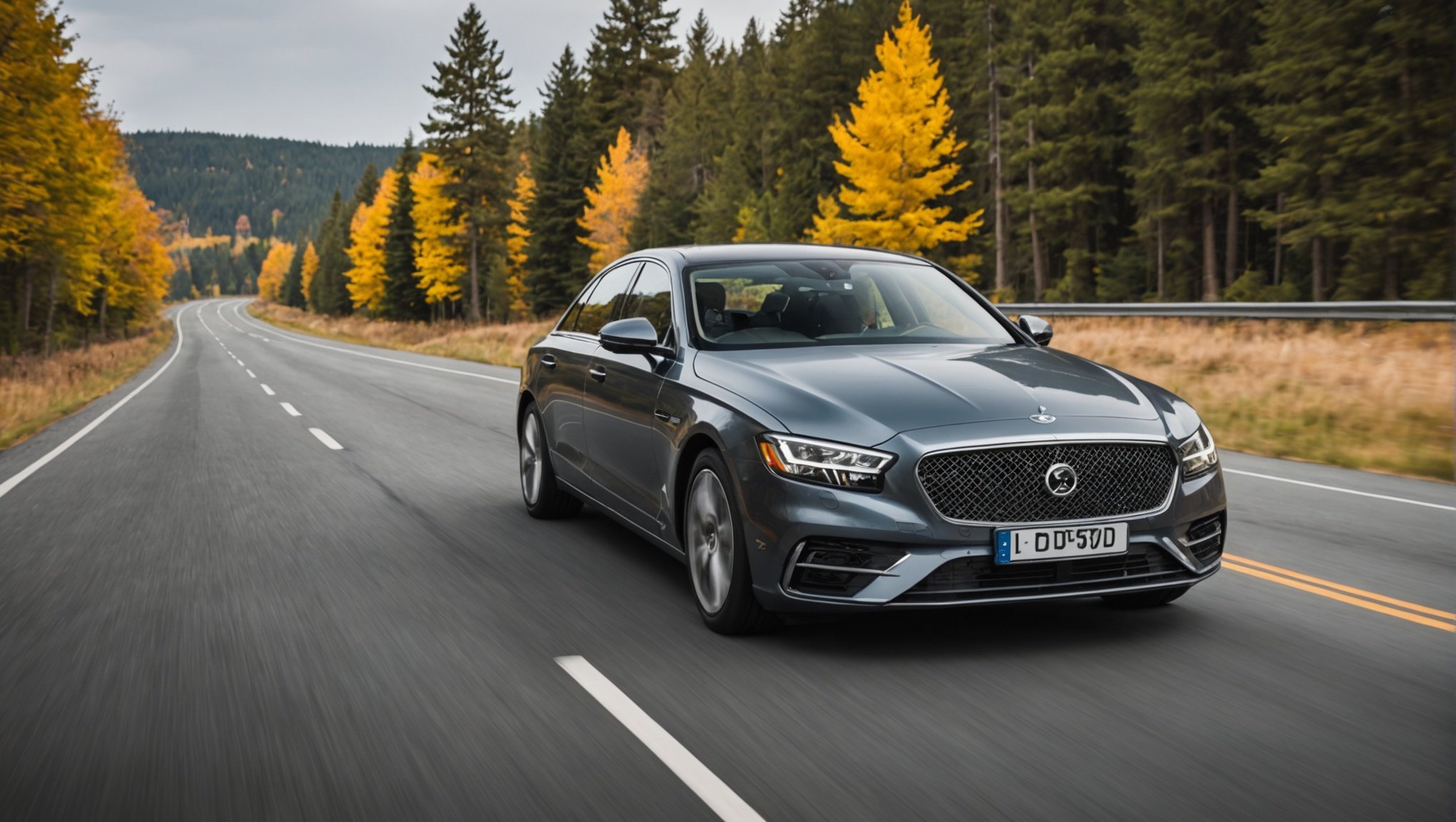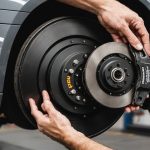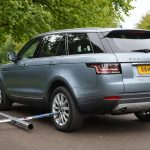Adaptive cruise control has revolutionized the driving experience in British luxury sedans, seamlessly blending comfort with cutting-edge safety. This technology not only adjusts speed automatically based on traffic conditions but also enhances the overall driving experience by reducing fatigue during long journeys. Discover how mastering this feature can elevate your driving skills, ensuring a safer and more enjoyable connection with your vehicle. Dive deeper into the convenience and peace of mind adaptive cruise control offers as we explore its key benefits and practical tips for optimal use.
Understanding Adaptive Cruise Control in British Luxury Sedans
Adaptive cruise control is a cutting-edge technology that enhances driving in British luxury sedans. Unlike traditional cruise control, which maintains a set speed, adaptive cruise control automatically adjusts the vehicle's speed to maintain a safe distance from the car ahead. This is achieved through the use of sensors and radar systems that continuously monitor the road conditions and traffic flow.
Additional reading : Step-by-Step Guide: Installing a Tow Bar on Your British Estate Car Without Voidings Your Warranty
Differences Between Adaptive and Traditional Cruise Control
The primary distinction lies in the automation and safety features. Traditional cruise control requires manual adjustments by the driver to handle changes in traffic speed, whereas adaptive cruise control offers a more seamless experience by autonomously managing speed variations. This not only reduces driver fatigue but also enhances safety on long journeys.
Importance of Adaptive Cruise Control in Luxury Vehicles
In the realm of British luxury sedans, adaptive cruise control is more than just a convenience; it's a hallmark of modern automotive innovation. This technology aligns with the luxury ethos by providing a smoother, more comfortable ride, allowing drivers to enjoy the journey with peace of mind. As a result, adaptive cruise control has become a sought-after feature, reflecting the commitment to safety and comfort that defines luxury vehicles.
Have you seen this : Revamp Your British Family Sedan: Step-by-Step Guide to Adding Stylish Modern LED Interior Lighting
Safety Features of Adaptive Cruise Control
Adaptive cruise control systems in luxury sedans are equipped with a range of safety features designed to enhance driving assistance and collision avoidance. These systems utilise advanced sensors and radar to monitor the vehicle's surroundings continuously.
Key Safety Features
One of the primary safety features is the ability to maintain a safe following distance from the vehicle ahead. This is achieved by automatically adjusting the car's speed, which significantly reduces the risk of rear-end collisions. Additionally, adaptive cruise control can alert drivers to potential hazards, offering an extra layer of security.
Enhancing Collision Avoidance
Adaptive cruise control enhances collision avoidance by predicting and reacting to changes in traffic conditions. For example, if a vehicle suddenly brakes in front, the system can automatically reduce speed or even bring the car to a complete stop. This proactive approach to safety helps prevent accidents and provides peace of mind for drivers.
Real-World Benefits
In real-world scenarios, these safety features have proven invaluable. Luxury sedans equipped with adaptive cruise control have been shown to reduce driver fatigue and improve overall road safety, making them a preferred choice for those seeking both comfort and security.
Step-by-Step Guide to Using Adaptive Cruise Control
Adaptive cruise control is a feature that enhances driving experiences by managing speed and distance. Here’s how to use it effectively in your luxury sedan.
Activating Adaptive Cruise Control
To activate adaptive cruise control, first ensure your vehicle is travelling at the desired speed. Locate the cruise control activation button, usually found on the steering wheel or dashboard. Press the button to engage the system. A display on the dashboard will confirm activation, allowing you to relax as the system takes over speed adjustments.
Adjusting Speed and Distance
Once activated, you can adjust the speed and following distance. Use the designated controls to increase or decrease speed as needed. Most systems allow you to set a preferred following distance from the car ahead. This ensures a safe distance is maintained, adapting to traffic conditions seamlessly.
Deactivating and Manual Control
Situations may arise where manual control is necessary. To deactivate, simply tap the brake pedal or press the cruise control off button. This returns full control to the driver, allowing for immediate response to unpredictable road conditions. Understanding these functions ensures a safer and more comfortable driving experience.
Benefits of Using Adaptive Cruise Control
Adaptive cruise control offers numerous driving benefits that enhance the overall experience of operating a luxury sedan. This technology significantly improves driving comfort by maintaining a consistent speed and safe distance, allowing drivers to focus less on manual adjustments and more on enjoying the journey.
Enhancements to Driving Comfort and Experience
The primary advantage of adaptive cruise control is the reduction of driver fatigue during long-distance travel. By automating speed adjustments, the system minimizes the need for constant braking and acceleration, creating a smoother ride. This not only enhances the driving experience but also contributes to a more relaxed journey.
Fuel Efficiency Improvements
Another significant benefit is improved fuel efficiency. Adaptive cruise control optimizes speed and reduces unnecessary acceleration, leading to more efficient fuel consumption. This is particularly beneficial during highway driving, where maintaining a steady pace can result in noticeable savings on fuel costs.
Impact on Long-Distance Travel and Driver Fatigue
For long-distance travel, adaptive cruise control is invaluable. It alleviates the strain of prolonged driving by managing speed and distance, allowing drivers to arrive at their destinations feeling less exhausted. This technology transforms the driving experience, making it both more comfortable and efficient.
Potential Risks and Limitations
While adaptive cruise control offers significant benefits, it is not without its risks and limitations. Users must be aware of these to ensure safe driving practices.
Common Risks Associated with Over-Reliance
One of the primary risks is over-reliance on the system. Drivers may become complacent, assuming the technology will handle all driving tasks. This can lead to delayed reactions in emergency situations where immediate human intervention is necessary. User awareness is crucial to mitigate this risk.
Limitations in Different Driving Conditions
Adaptive cruise control can struggle in certain environments. For instance, adverse weather conditions such as heavy rain or fog can impair the system's sensors, reducing its effectiveness. Similarly, in urban settings with frequent stops and starts, the system may not perform optimally. Understanding these limitations is vital for maintaining safety.
Importance of User Awareness and Active Driving Engagement
Drivers should remain actively engaged and aware at all times. While adaptive cruise control assists with speed and distance management, it is not a substitute for human judgement. Regularly checking the road and being prepared to take control ensures a balanced approach to using this advanced technology.
Real-Life Testimonials and Expert Tips
Delving into the real-world experiences of luxury sedan owners and gathering expert advice can provide invaluable insights into the effective use of adaptive cruise control.
User Testimonials from Luxury Sedan Owners
Luxury sedan owners frequently praise adaptive cruise control for transforming their driving experiences. Many drivers highlight the reduction in fatigue during long journeys, noting how the system seamlessly manages speed and distance. This technology is often described as a game-changer, providing a more relaxed and enjoyable driving experience. Users appreciate the enhanced driving safety, which allows them to focus more on the road and less on manual speed adjustments.
Expert Driving Tips for Adaptive Cruise Control
Experts recommend a few strategies to maximise the benefits of adaptive cruise control. Firstly, always remain attentive and ready to take control if necessary. Secondly, regularly check and adjust the system's settings to suit current traffic conditions. Lastly, ensure your vehicle's sensors are clean and functioning properly to maintain optimal performance.
Recommendations for Safe Use
To ensure safe use, consider these expert recommendations:
- Stay engaged: Always be prepared to manually intervene.
- Adjust settings: Tailor speed and distance settings to your driving environment.
- Monitor conditions: Be aware of weather and road conditions that may affect system performance.
These practices help maintain a balance between convenience and safety.
















